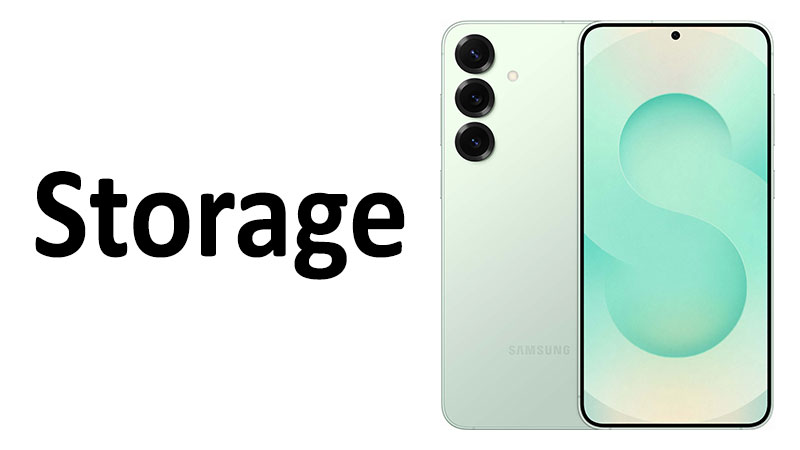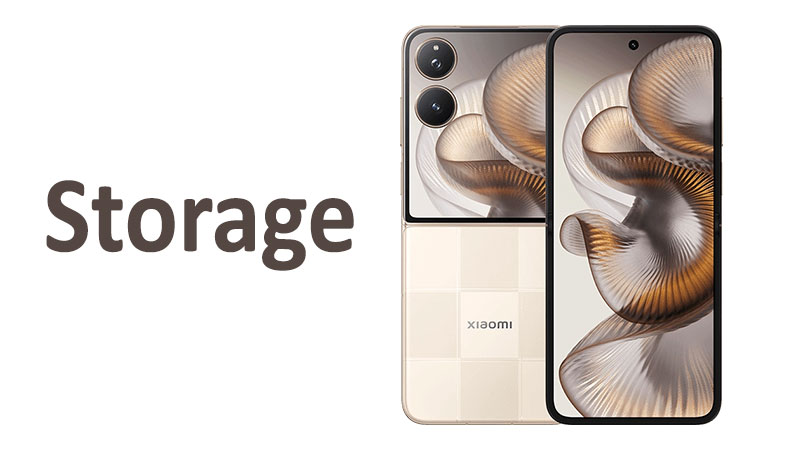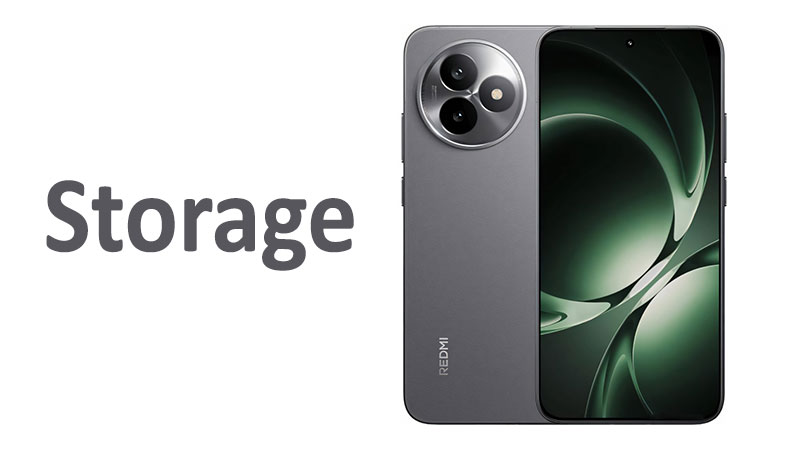Samsung Galaxy S25 Plus storage is a vital component of its overall performance. Understanding the capacity and type of storage is essential for any buyer. This guide explores every detail of the S25 Plus’s memory system. We analyze the available options and the technology behind them. The right storage configuration ensures long-term usefulness and fast performance. This comprehensive article will help you make the most informed choice. We cover everything from capacity to the underlying UFS 4.0 speed.
Analyzing the Samsung Galaxy S25 Plus Storage Capacity
The Samsung Galaxy S25 Plus offers two primary storage tiers. These options cater to distinctly different user needs and habits. You can choose between a 256GB model and a 512GB model. These capacities dictate how much data you can store on your device. This includes applications, high-resolution photos, 4K videos, and large game files. The choice of capacity directly impacts the phone’s ability to serve you long-term.
256GB: The New Standard for Modern Users
The 256GB capacity is now considered the standard baseline for flagship phones. Many users will find this size more than sufficient for their daily needs. It easily accommodates hundreds of necessary applications. This storage size holds thousands of high-resolution image files. It also allows for hours of recording high-quality video content. This capacity is highly suitable for the average smartphone user. Users who frequently rely on efficient cloud storage will find 256GB perfectly adequate. It balances initial cost and high-end usability effectively.
512GB: Empowering Power Users and Creators
The larger 512GB option directly targets power users and professional content creators. Users who generate extensive amounts of media benefit greatly from this tier. This includes mobile photographers and dedicated, avid mobile gamers. Large 3D games and massive multimedia files quickly consume storage space. The 512GB model provides necessary and comfortable breathing room. It effectively eliminates the need for constant, manual file management. This option helps to future-proof the device for several years of heavy use. It represents a worthy extra investment for any heavy digital consumption.
Comparison with the Predecessor (Galaxy S24 Plus)
The Samsung Galaxy S25 Plus maintains similar base storage options. The previous S24 Plus also offered 256GB as its starting capacity. This consistency provides a familiar point of reference for consumers. However, the internal memory technology marks a significant and necessary shift. We will discuss the immense speed improvements shortly in the next section. The S25 Plus focuses on much faster data access, not merely larger space. This focus improves the quality of the overall user experience dramatically. The buyer’s decision remains about required capacity, but performance sees a major boost.
UFS 4.0: The Next Generation of Storage Technology
The storage type in the S25 Plus is Universal Flash Storage 4.0. UFS 4.0 represents a monumental leap in mobile flash memory technology. This modern flash memory standard offers incredible speed and high efficiency. It is the core reason for the phone’s responsive, snappy feeling. The significant speed boost affects nearly every interaction on the phone. This includes application loading times, rapid file transfers, and system boot times. Selecting a phone with UFS 4.0 guarantees top-tier performance.
Technical Deep Dive: UFS 4.0 Performance
UFS 4.0 effectively doubles the theoretical sequential read speeds of UFS 3.1. UFS 3.1 was the common standard in many prior flagship mobile devices. The new UFS 4.0 standard reaches sequential read speeds up to 4,200 MB/s. Sequential write speeds can hit a maximum of approximately 2,800 MB/s. These unprecedented speeds translate into a better real-world user experience. Loading large, complicated game maps becomes near-instantaneous. Copying massive 8K video files takes only mere seconds to complete. The performance difference is highly noticeable in all demanding background tasks.
Power Efficiency and Storage Longevity
The UFS 4.0 standard is also significantly more power efficient than its predecessors. It uses substantially less power per unit of data transferred across the chip. This efficiency is critical for modern high-performance smartphones. It directly contributes to a longer battery life during intensive periods of use. UFS 4.0 also improves the device’s thermal management effectively. Faster data transfer means the memory chip operates for shorter bursts. This consequently reduces the heat generation under a heavy load. The improved thermal performance can also help prolong the overall lifespan of the storage chip.
Specialized Comparison: UFS 4.0 vs. UFS 3.1
The performance gap between UFS 4.0 and UFS 3.1 is the primary upgrade story. UFS 3.1 offered peak read speeds of around 2,100 MB/s. UFS 4.0 essentially doubles this peak speed. This speed increase is facilitated by a newer interface. It utilizes two high-speed data lanes instead of one. This dual-lane architecture maximizes data throughput efficiently. Furthermore, UFS 4.0 uses a more compact package design. This frees up valuable internal space within the S25 Plus chassis. The increased speed and efficiency make UFS 4.0 a non-negotiable feature for a 2025 flagship.
Storage Configurations and 12GB RAM Synergy
The storage capacity is always paired with the phone’s Random Access Memory (RAM). The Samsung Galaxy S25 Plus features 12GB of RAM in both storage configurations. RAM is considered the system’s short-term working memory. It allows the operating system to run multiple applications simultaneously and quickly. The combination of fast UFS 4.0 storage and ample 12GB RAM is a potent mix. This pairing ensures perfectly smooth, lag-free operation and multitasking. This synergy maximizes the responsiveness of the One UI interface.
The 256GB / 12GB RAM Configuration Detailed
This configuration offers the best balance of speed and storage capacity for most users. The 12GB RAM provides sufficient overhead for intensive multitasking. This applies to running demanding apps and heavy web browsing with many tabs. The 256GB storage is extremely fast due to the UFS 4.0 technology. This setup is the most budget-friendly of the available options. It is highly recommended for users who prioritize speed and efficiency above all. It is also suitable for those who diligently manage their local files.
The 512GB / 12GB RAM Configuration Detailed
This configuration is the maximum storage capacity available to consumers. It pairs the generous 512GB storage with the same 12GB RAM module. The extra storage is the only technical difference between the two tiers. Performance and multitasking ability remain functionally identical to the 256GB model. The main benefit is the sheer, unbridled capacity provided. This setup is the ultimate choice for media heavy users and file hoarders. It is perfect for users who shoot significant amounts of high-bitrate video. They can store all their content locally without unnecessary worries. The combination is ideal for serious professional mobile content creation.
The Impact of 12GB RAM on Performance
The speed of the storage heavily influences the perceived RAM performance. When the system requires more memory, it uses a temporary swap file on the storage. Faster UFS 4.0 speeds mean quicker access to this crucial swap file. This results in much smoother transitions between open applications. The user experiences this as a highly fluid and more responsive device. The generous 12GB of RAM is utilized far more effectively due to the fast storage access. It minimizes the need for the operating system to force-close background apps.
Comprehensive Buyer’s Guide and Critical Factors
Purchasing a new flagship phone involves several crucial considerations. Internal storage is arguably one of the most critical decisions you will make. You cannot upgrade the internal storage after the purchase is complete. Choosing the right capacity now prevents potential future headaches and frustration. This section helps you determine your ideal S25 Plus storage configuration based on your habits.
Assessing Your Individual Storage Needs
First, carefully evaluate your current smartphone usage habits and data consumption. How much storage are you currently using on your existing phone? Do you make it a point to regularly delete old photos and videos? Consider the types of media you consume daily. Do you often download full-length movies for offline viewing on flights? A good rule of thumb is to estimate your usage and always add a necessary buffer. If your current phone storage is often full, always choose the next capacity tier up. Cloud services help, but local storage is always faster and the most reliable.
Longevity and Future-Proofing Considerations
Choosing the larger storage option significantly aids the device’s long-term longevity. Applications and operating systems always tend to grow larger over time. Future high-resolution media will also inevitably demand more storage space. A 512GB model will remain usable for more years than a 256GB one. Furthermore, higher capacity models often maintain a noticeably better resale value. This factor can effectively offset some of the initial higher cost over the device’s lifespan. Smart buyers always consider the entire economic lifecycle of the device they purchase.
Addressing the Finality of Internal Storage
The Samsung Galaxy S25 Plus does not offer a dedicated microSD card expansion slot. This is a common and predictable feature omission in premium flagship devices. Therefore, the internal storage capacity you choose is absolutely final. Consider this a permanent decision when you are purchasing the phone. The UFS 4.0 technology is a massive speed benefit for both tiers. Do not worry about speed differences between the 256GB and 512GB capacity options. Focus entirely and solely on the actual space you require.
Pros and Cons of the S25 Plus Storage System
Understanding the trade-offs is absolutely crucial for an informed buying decision. The S25 Plus storage system has significant technical advantages. However, it also presents a few practical limitations for certain users. This balanced review helps to summarize the situation clearly.
Pros of the S25 Plus Storage
- Blazing Speed: The UFS 4.0 standard delivers exceptional sequential and random speeds. This makes the overall phone experience feel incredibly fluid and fast.
- Enhanced Efficiency: UFS 4.0 provides a much better power consumption profile. This directly benefits the phone’s valuable overall battery life and efficiency.
- Ample Base Capacity: The 256GB minimum is a generous starting point for a flagship device. It suitably serves most average users right out of the box.
- Future-Proofing: The 512GB option ensures enough space for years of high-quality content creation and storage.
- Excellent Multitasking: The 12GB of RAM is perfectly paired with the fast storage. This provides seamless app switching and system stability.
Cons of the S25 Plus Storage
- No Expandable Storage: The absence of a dedicated microSD card slot is a major drawback. Users cannot cheaply or easily upgrade storage later on.
- Limited Capacity Options: Only two configurations, 256GB and 512GB, are available to the consumer. Some flagship competitors often offer 1TB storage options.
- Higher Entry Cost: The base 256GB model is still positioned at a high flagship price. The 512GB model carries an even more notable price premium.
- Irreversible Decision: The capacity choice is absolutely permanent. You must choose wisely and carefully at the time of initial purchase.
Deep Diving into UFS 4.0: Benchmarks and Real-World Impact
The transition to UFS 4.0 is more than just a minor specification update. It fundamentally changes how the phone operates at a core level. We can closely examine theoretical benchmarks for a clear comparison. UFS 3.1 maxed out at approximately 2,100 MB/s sequential read speed. UFS 4.0 nearly doubles this at a staggering 4,200 MB/s. This difference is stark when moving very large blocks of data. For instance, installing a massive game update is completed much faster. This time saving quickly adds up over the phone’s expected lifespan.
Random Read/Write Speeds: The True Performance Indicator
Sequential speeds are certainly impressive on paper for marketing purposes. However, random read and write speeds are more crucial for daily, habitual use. Random speeds dictate how fast the phone handles small data bits simultaneously. This occurs when opening many applications or scrolling through social media feeds. UFS 4.0 significantly boosts these essential random operations. The phone’s operating system feels noticeably snappier and incredibly fluid. Applications launch without any discernible or annoying delay whatsoever. This speed improvement is highly consistent across all S25 Plus storage capacities. This overall fast performance elevates the standard user experience.
The Financial and Practical Implications of Storage Choice
The storage decision is an economic choice as well as a practical one for the user. The price difference between the 256GB and 512GB models can be significant. Buyers must determine if the additional cost justifies the extra space they gain. Consider the cost per gigabyte carefully during your evaluation. Often, the base model offers the best value for money upfront. However, the extra space is invaluable if you absolutely need it. The 512GB model provides necessary storage security without any recurring monthly fees.
Impact on 8K Video and High-Resolution Photography
The S25 Plus camera system captures stunning high-resolution content for users. Filming 8K video content consumes internal storage incredibly rapidly. One single minute of 8K video can easily take up hundreds of megabytes of space. Professional mobile videographers therefore require the 512GB tier unequivocally. Similarly, the high-resolution photo modes create very large image files. These files quickly fill up the smaller 256GB drive in a short time. The UFS 4.0 speed is absolutely necessary for recording these massive files. The speed ensures continuous, stutter-free recording at the maximum quality.
Detailed Review of System Performance Benefits
Let us examine specific performance areas improved by the new UFS 4.0. These significant improvements go beyond general file management tasks. They also fundamentally affect everyday user interaction and feel.
Gaming Performance and Load Times
Mobile gaming is one of the major use cases for any modern flagship phone. Large, open-world games require fast texture and asset loading from storage. UFS 4.0 dramatically reduces annoying loading screens in these modern games. Game assets load faster from storage into the phone’s 12GB of RAM. This provides a much more immersive and seamless gaming experience overall. Furthermore, the faster storage helps to effectively manage virtual memory allocation. This ensures stable frame rates during the most intense gaming sessions imaginable.
App Installation and Update Speeds
App installation involves writing and verifying large data blocks to the storage. The S25 Plus handles this complete process exceptionally quickly. Installing a new, major application takes significantly less time than before. System updates, which can be several gigabytes large, are also processed much faster. This minimizes unnecessary downtime for the user waiting for updates to complete. Fast updates mean you access the latest features and security patches sooner. This is a crucial, often overlooked, benefit of the UFS 4.0 technology.
System Responsiveness and Boot Time
The UFS 4.0 speed also strongly impacts the system’s initial boot time. The operating system loads all critical files from storage incredibly rapidly. The S25 Plus should boast one of the fastest boot times currently available. This is important for users who occasionally restart their devices when necessary. A quick boot time contributes significantly to a feeling of premium responsiveness. The cutting-edge storage technology is the powerful, silent engine of this perceived speed.
Future-Proofing the S25 Plus Investment
Investing in a flagship device like the S25 Plus is often a multi-year commitment. The storage choice you make should accurately reflect this long-term view. Technology advancements will always demand more computing resources over time.
Software and Operating System Growth
Android and Samsung’s One UI continue to evolve and expand. New operating system versions are often significantly larger than previous ones. They require more storage space for installation and core system files. They also utilize much larger cache files for new, demanding features. Choosing 512GB helps to future-proof the phone against this expected software bloat. It ensures sufficient space for several major operating system updates over the years.
The Trend in Media Consumption
Media files continue to increase in size and resolution every year. 4K video is now the standard; 8K is becoming steadily more common. Higher-resolution streaming and recording are the new industry norm. The demand for local storage will only continue to rapidly grow. Even if you stream content, the phone still caches large amounts of data locally. This continuous demand makes the 512GB option a much safer long-term bet for the future. It protects your significant investment against potential storage obsolescence.
FAQ
Does the Samsung Galaxy S25 Plus storage feature external expansion?
No, the Samsung Galaxy S25 Plus does not include a microSD card slot. The storage capacity you choose at purchase is permanent.
What is UFS 4.0 and why is it important for my phone?
UFS 4.0 is the latest Universal Flash Storage standard. It is important because it provides double the speed of older UFS 3.1. This results in faster app loading and file transfers.
Does the 256GB S25 Plus use the same UFS 4.0 speed as the 512GB model?
Yes. Both the 256GB and 512GB models utilize the same UFS 4.0 technology. Therefore, the speed performance is identical between them.
What is the RAM configuration of the S25 Plus?
The Samsung Galaxy S25 Plus comes exclusively with 12GB of LPDDR5X RAM. This configuration is standard for both the 256GB and 512GB storage tiers.
How does UFS 4.0 help improve the phone’s battery life?
UFS 4.0 is significantly more power efficient than previous standards. It transfers data faster, so the chip spends less time active. This reduced activity helps to conserve battery power.



